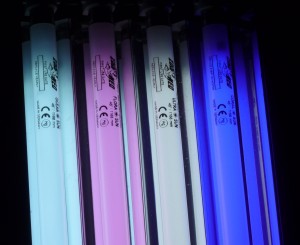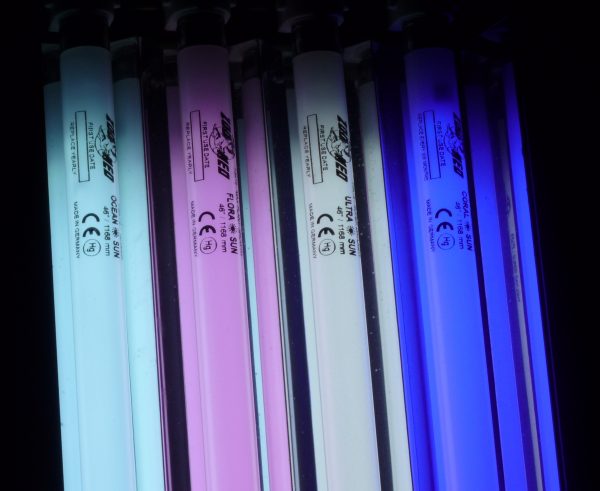Reef Aquarium Lighting
One of the most common questions I hear from new saltwater aquarium hobbyists about reef aquarium lighting is, “How much light do I need? Is there a minimum wattage I should consider to keep coral in a reef tank?”
I have heard aquarists offer up the advice that to keep coral, they should have between 2 and 6 watts of lighting per gallon of aquarium water. By this rule of thumb, they are essentially recommending that an aquarist with a 10-gallon tank needs a light consuming 20-60 watts of light, depending on the lighting demands of the individual specimens they intend to keep.
By comparison, the aquarist with a 75-gallon tank would need 150 to 450 watts.
For one thing, that is a pretty broad range, but while the rule of thumb tends to point you to the right ballpark, it leaves a lot to be desired to make an informed decision. As consumers, wattage seems to be one of the more distinguishable technical features associated with light bulbs.
The recent popularity of compact fluorescents has broadened the general use of fluorescent lights—and they are marketed (and purchased) on the premise of energy consumption (wattage) and more accurately the energy and cost savings they provide for a light output compared with incandescent bulbs.
While wattage does impact us as aquarists, the place it is most appropriately affects is the wallet, as it is the thing that makes the electrical meter spin wildly all day. The more relevant information to consider is the color temperature (Kelvin rating), wavelength and PAR output (Photosynthetically Active Radiation).
What is color temperature?
 From a technical perspective, the definition of color temperature can be intimidating for the average person. Here is an excerpt from Wikipedia to blow your mind:
From a technical perspective, the definition of color temperature can be intimidating for the average person. Here is an excerpt from Wikipedia to blow your mind:
“The color temperature of a light source is the temperature of an ideal black-body radiator that radiates light of comparable hue to that light source. The temperature is conventionally stated in units of absolute temperature, Kelvin [K]. Color temperature is related to Planck’s law and to Wien’s displacement law.”
If you want to bone up on the science behind color temperature, here is the link to the full entry on Wikipedia, which appeared to be correct.
But if you’re like me, you just want to somebody to give you the gist of it. The fact is, you are probably familiar with the concept of color temperature already, based on your experiences with everyday household light bulbs.
Did you ever try to replace a burned out light bulb, only to find that you had purchased a soft white bulb when the other bulbs in the room were daylight bulbs? Well, the difference you would have noticed (assuming it was the same wattage and style) was color temperature. Soft white or warm white bulbs tend to run around 2,700K, whereas daylight incandescent tend to be in the 5,000K-6,000K range.
So don’t be intimidated by the technical sounding talking points about color temperature. While we tend to use bulbs in the 2,700K-6,000K range at home, as indicated above, aquarists often will employ higher temperature bulbs producing outputs of 10,000K, 14,000K, even 20,000K, to achieve the desired light output.
Just picture in your mind, the shift from warm white bulbs to daylight bulbs, and from daylight bulbs picture a bright whitish/blue light that you would associate with a reef tank look.
I did a side-by-side comparison of the effect of color temperature on the look of my aquarium. You can check out that thread here:
Reef Aquarium Experiment with Color Temperature

Leave a Reply